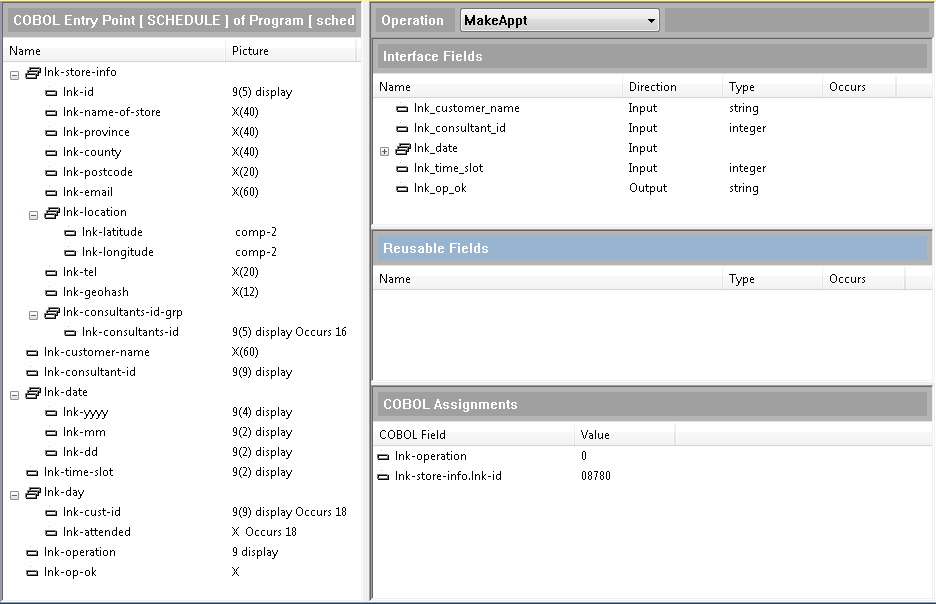Describes the components of the
Interface Mapper and explains the purpose of each.
Restriction: This topic applies only when the Enterprise Server feature is enabled.
The
Interface Mapper user interface for COBOL Program service interfaces is split into two parts. The left side shows COBOL
entry point fields, and the right shows interface fields, reusable fields, and COBOL assignments.

- COBOL Entry Point pane
- Shows the selected
COBOL Entry Point from the selected COBOL legacy program.
- Interface Fields pane
- In the
Interface Fields pane, you define the details of each field you want to include in your service interface. Each interface field corresponds to a COBOL field shown in the
COBOL Entry Point pane. Only the interface fields for the current operation show in this pane.
The most straightforward way to create an interface field from a COBOL field is by dragging a COBOL field from the
COBOL Entry Point pane and dropping it onto the
Interface Fields pane. This creates a mapping between the COBOL field and the new interface field. From the
Interface Fields pane, you can further define the details for that field as it is used by the service interface.
- Reusable Fields pane
- This pane is primarily for convenience. In it, you create fields you want to use across operations. Then, for each operation in which you want to use one of these fields, drag and drop it from the
Reusable Fields pane to the
Interface Fields pane. The contents of the
Reusable Fields pane does not change from operation to operation in a single service interface.
The
Type of interface field created derived from the name of the reusable field. For example, if you create a reusable field named
MyReusableField and then drag and drop it into the
Interface Fields pane, the value in the
Type column for that field is MyResuableField.
- COBOL Assignments pane
- Shows COBOL assignment you create for the service interface. Use a COBOL assignment to define the path taken by the legacy application for the current operation by providing a unique parameter value. This enables you to perform a different function from each operation even if all operations use the same entry point. The program takes a different path depending on the value of a parameter. Instead of defining an interface field to map to that parameter, place the value here that makes the program take the required path.









